|
|
|
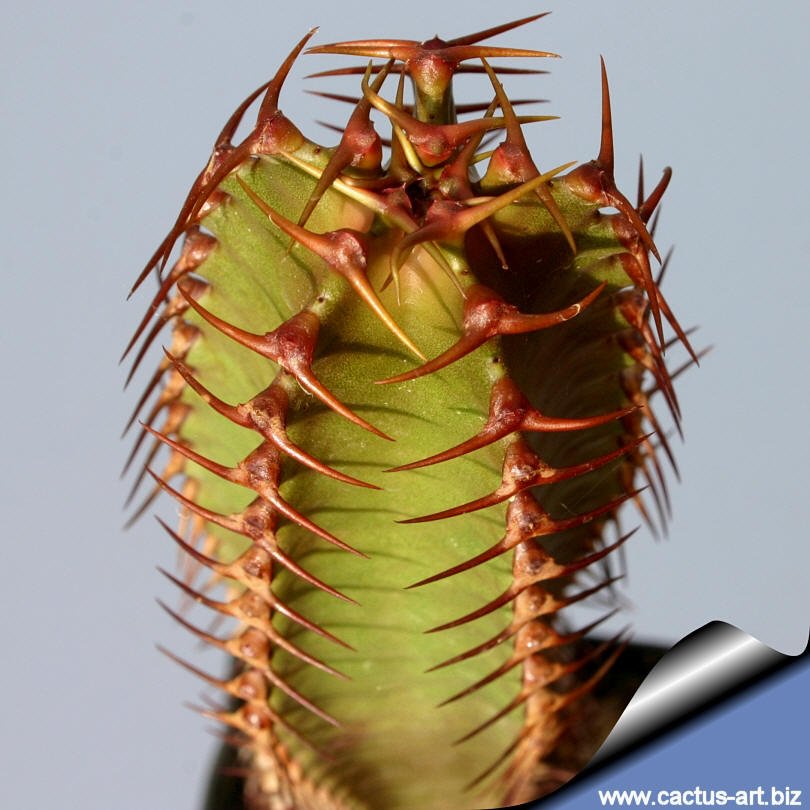
Euphorbia canariensis
This plant is furnished of dark shining spines in pair. Perfectly
regular, straight to cow-horn shaped, spreading laterally in rows along
the four corners of the columns, and are fairly short- easy to avoid
with care, or gloves.
|
|
Description: It is small succulent tree, 1 to 3(-4) m high. It
clumps profusely from the base, one trunk may produce more than150
branches as thick as a man's arm.
Stems: Fleshy, stout, highly succulent, columnar, upright
growing, cactus-like. They are deep green to reddish, 4 (rarely 5 or 6)
angled up to 8 cm in diameter slightly spiralled. The surfaces, which
are from 2 to 5 cm broad, are plain with a clean and smooth epidermis.
The edges are obtuse and of a brown colour. The lateral branches forms
an angle at their base, but are straight in the rest of their growth.
Spines: This plant is furnished of dark shining spines in pair.
Perfectly regular, straight to cow-horn
shaped, spreading laterally in rows along the four corners of the
columns.
Flowers: Dark red to reddish-green in
monoecious heads, surrounded by an involucrum consisting of 1 leaf with
5 division, which have externally 5 glands alternating with them.
Males naked monoandrous, articulated with their pedicel surrounding
the female, which is in the centrum. Females naked solitary.
Ovarium stalked. Stigma three forked.
Fruit: Maroon red on adult plants. The fruits hang out of the
involucrum and each contain one suspended seed.
Remarks: Itís one of the more poisonous spurges. The latex which
is very bitter and acrid contains diterpenes and is considered highly
toxic.
|
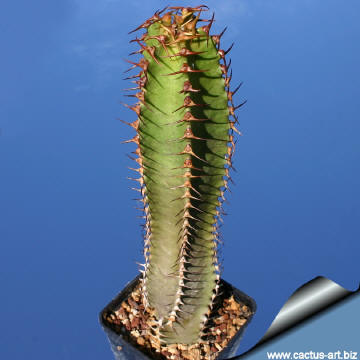 |
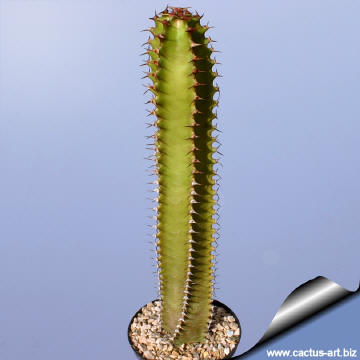 |
|
USES:
- It is traditionally used in the canary island
for fuel after it is dried. (a big plant may provide enough wood for
one person for all winter.
- This species is also widely used in
horticulture as a strong long lasting grafting stock for rare slow
growing, sensitive species of Euphorbia.


|
|
Advertising
|
|
|
|
|
Family: Euphorbiaceae
Scientific name: Euphorbia
canariensis L.
In: Sp. Pl.: 450 (1753)
Common English Names include: Commonly known as the
Canary Island Spurge, Canary Candelaber Spurge or as Hercules Club to
horticulturalists
Origin: Endemic to canary islands.
Habitat: Grows natively in the arid and
humid environment of the narrow coastal belt, from sea level to 0 metres
to 1,100 metres. It occours in dry lava formations and mainly on the
south facing mountain slopes on all islands. It is one of the most
abundant plants on the
sea-cliffs.
Conservation status: Listed in
CITES appendix 2.
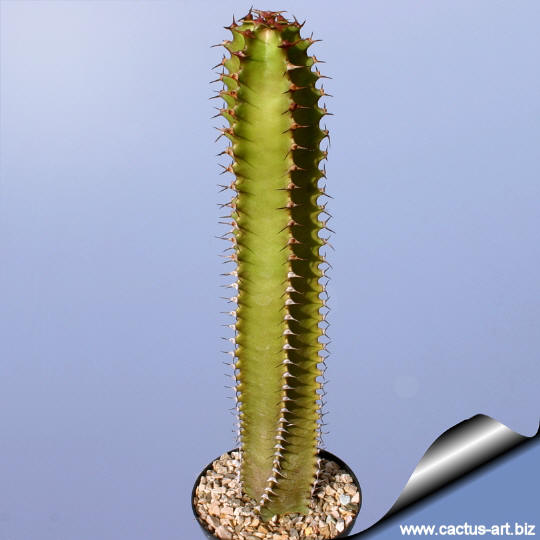
This is one of the most attractive and 'neat'
columnar Euphorbias, and makes a striking, beautiful landscape plant.
|
|
|
|
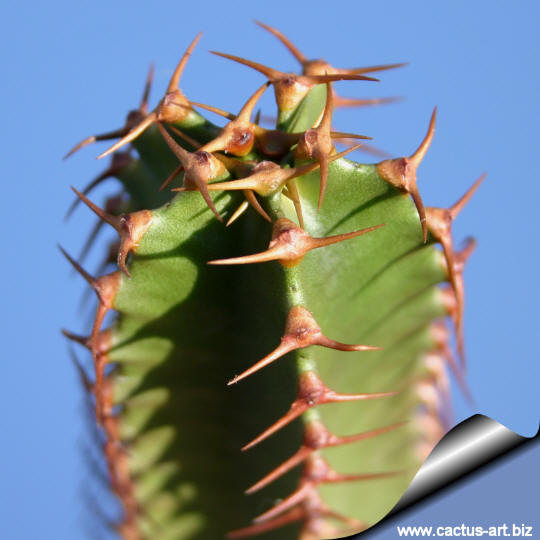
Cultivation: It is an easy species to grow that is suited for any
well drained soil in full sun. Give the plant an airy growing medium
which mainly consists of non organic material such us clay, pumice, lava
grit, and only a little peat or leaf-mould. Water regularly during the
active growing season. No water should ever be allowed to stand around
the roots. Keep almost completely dry in winter. It is a moderately fast
grower, and will quickly become large landscape masterpieces in just 3-5
years. Only downside is from strong winds, the columns often smash into
each other, causing permanent scarring... best to plant in such a
location where winds are not a big issue. If plant becomes very red,
this is a sign that the roots have not developed properly. It is
a relatively fast growing and long lived plant and once established, it
will be content in its position and with its soil for years. It can
tolerate moderate shade, and a plant that has been growing in shade
should be slowly hardened off before placing it in full sun as the plant
will be severely scorched if moved too suddenly from shade into sun. Propagation: The plant can be reproduced by seeds or cuttings.
|
|